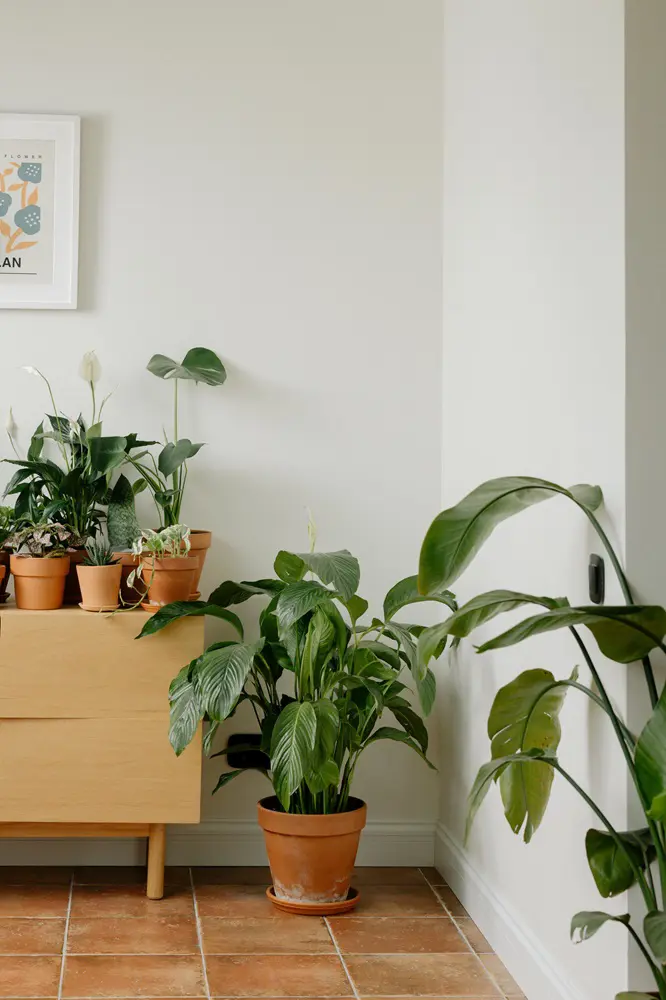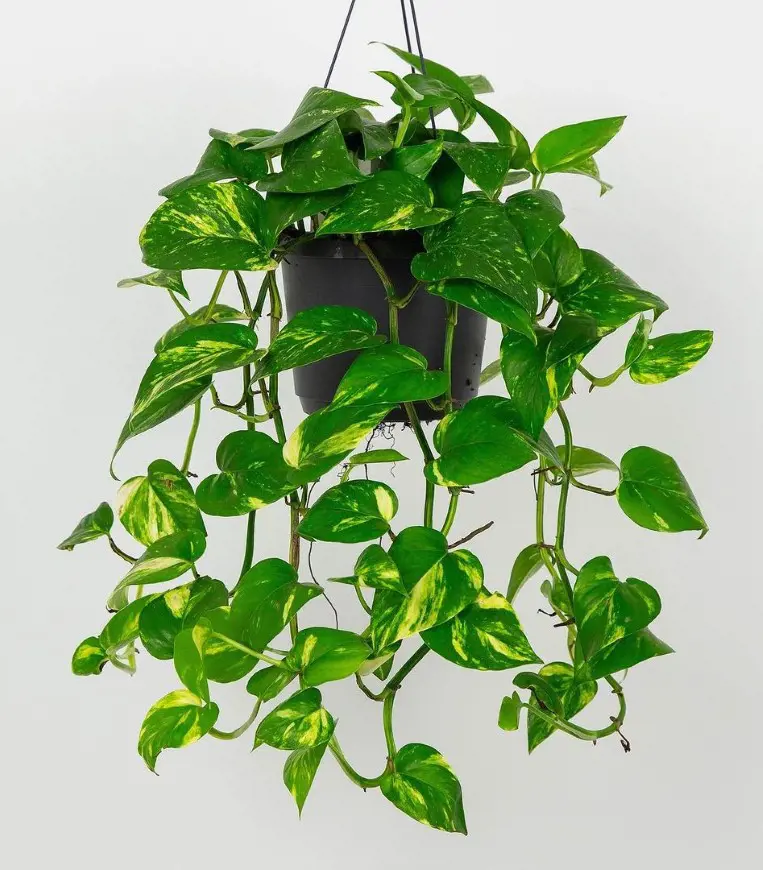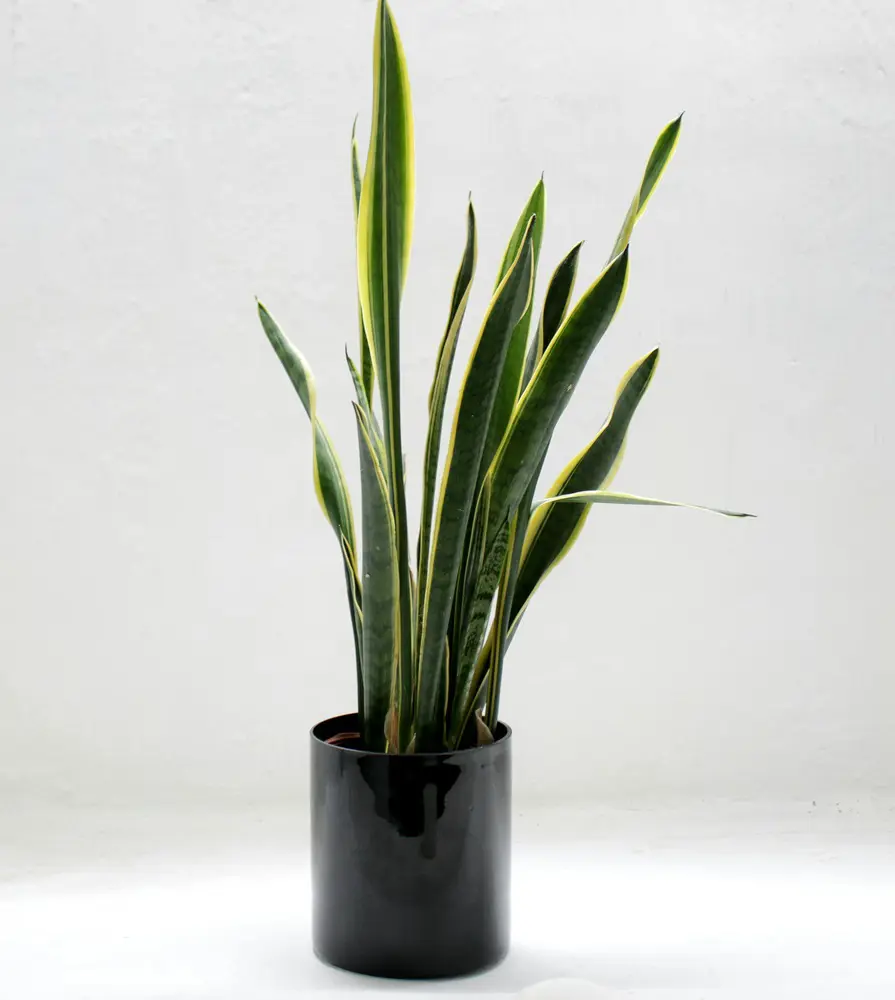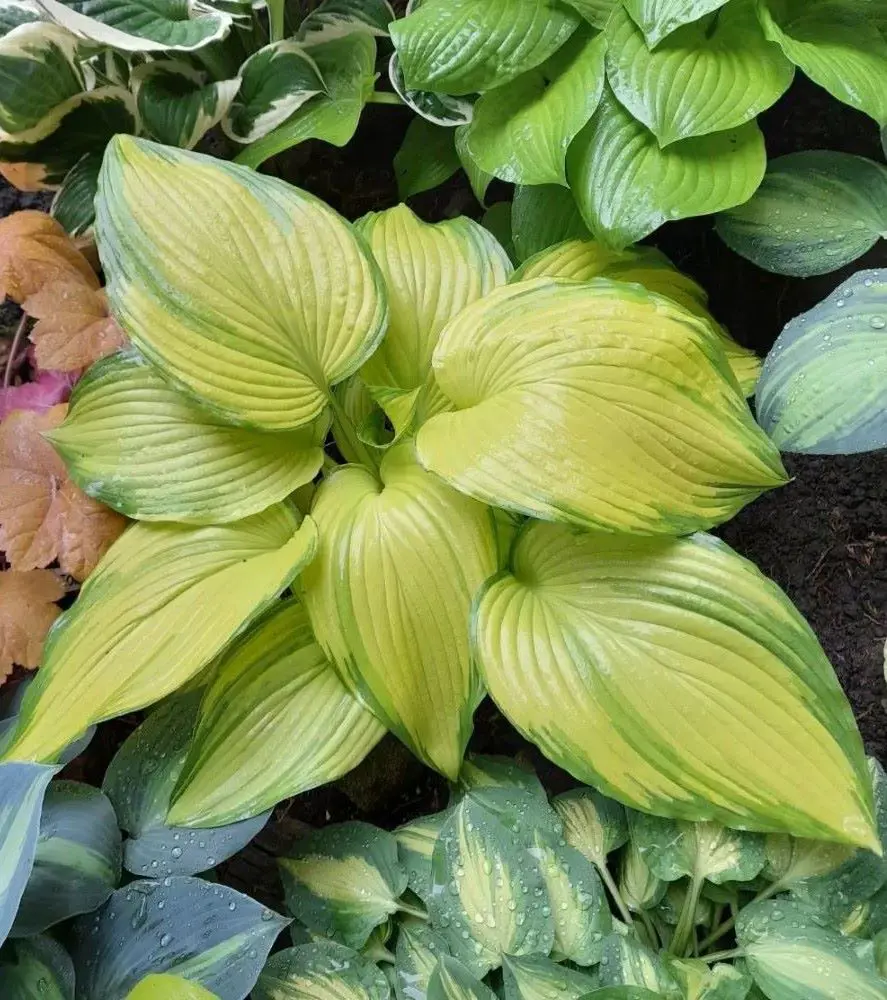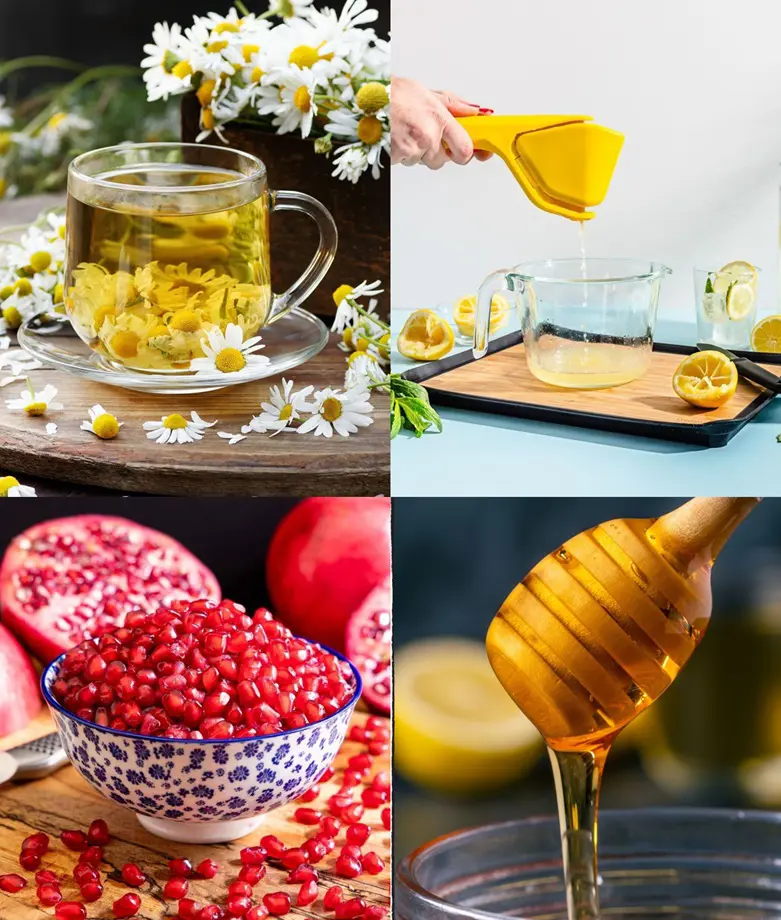Here's The Reason Why Monstera Leaves Are Turning Yellow

This post may contain affiliate links. If you make a purchase through links on our site, we may earn a commission.
The Monstera, known for its striking foliage and unique leaf shape, is a popular indoor plant. Native to tropical regions, these plants flourish in indirect sunlight and moist, well-draining soil. Despite their resilience, yellowing leaves can sometimes occur, indicating potential issues.
For older leaves at the bottom of the plant, it's normal to turn yellow and eventually die off as part of the natural growth process. However, persistent or widespread yellowing indicates a more serious issue that requires attention.
Understanding The Causes
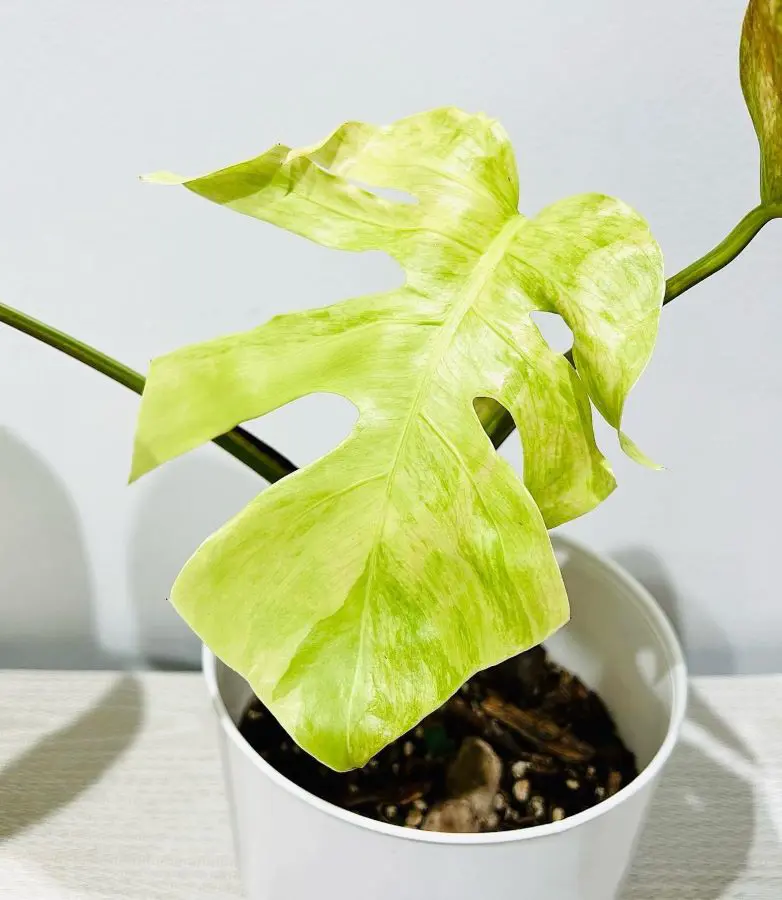
Monstera leaves turning yellow means something isn't quite right with the plant. This might happen if the plant gets too much or too little water, doesn't have enough sunlight, or if the soil doesn't drain well.
If you see a lot of yellow leaves, it's a signal that something needs fixing to keep your plant healthy. Here are some of the underlying causes of Monstera leaves turning yellow:
1. Watering Issues
Watering issues can result from overwatering and underwatering.
- Overwatering: When Monstera plants receive too much water, the soil becomes waterlogged, leading to root suffocation and rot. This deprives the plant of oxygen and nutrients, resulting in yellowing leaves. Over time, affected leaves may become mushy, and the soil may emit a foul odor.
- Underwatering: Conversely, underwatering Monstera plants can also cause yellowing leaves. Inadequate moisture leads to stressed plants as they struggle to absorb water and nutrients. Leaves may wilt, become crispy, and turn yellow, particularly at the tips and edges.
2. Lighting Problems
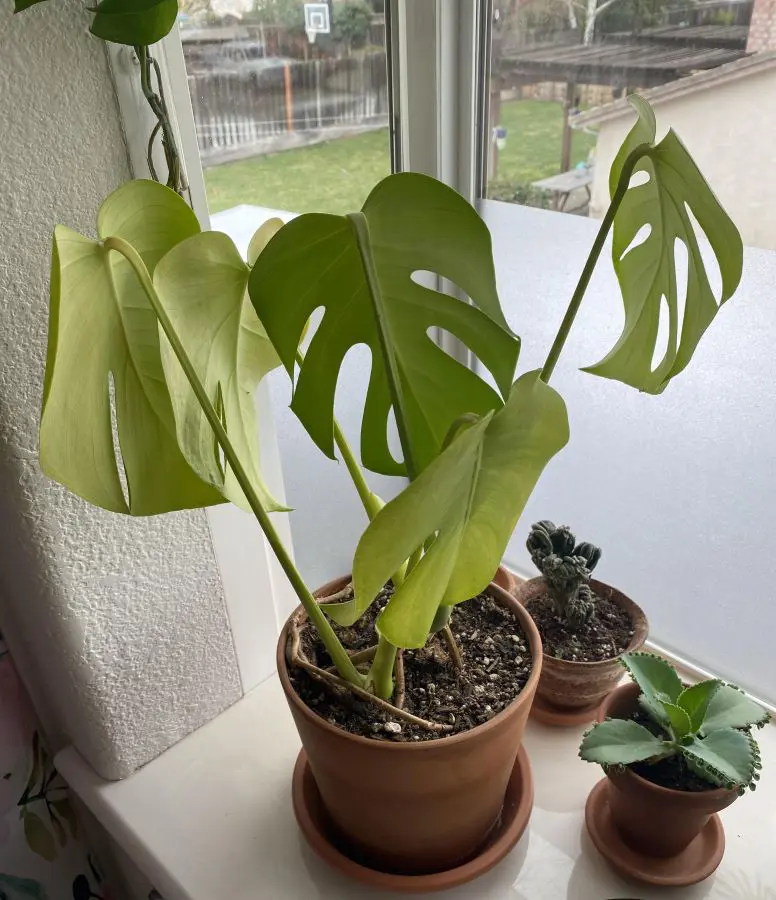
Light is another important issue that might cause yellowing of the leaves. Monstera plants thrive in bright, indirect sunlight. Insufficient light can impede photosynthesis, the process by which plants convert light into energy, resulting in the chlorosis (yellowing) of leaves. This typically starts with older leaves and progresses upward.
While Monstera plants enjoy bright light, direct sunlight can be too intense and cause sunburn, leading to yellow or brown patches on the leaves.
3. Nutritional Deficiencies
Nitrogen is crucial for plant growth and leaf development. Macro-nutrient deficiencies, such as not having enough nitrogen, phosphorus, or potassium, often show up as yellowing leaves. For instance, when there's not enough nitrogen, leaves turn yellow while their veins stay green.
Shortages of phosphorus and potassium can make the whole leaf yellow. Additionally, micronutrient shortages, like lacking iron, magnesium, or manganese, can also lead to yellowing leaves.
Iron is essential for chlorophyll production, the pigment responsible for giving leaves their green color. Insufficient iron results in interveinal chlorosis, where the leaf veins remain green while the rest of the leaf turns yellow.
Other Potential Causes
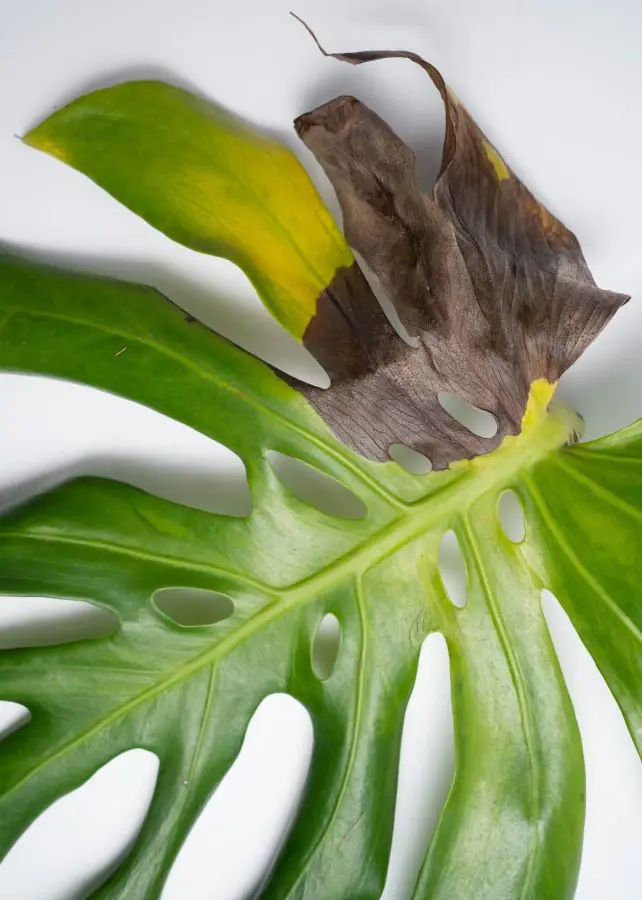
Besides the main culprits behind Monstera's yellow leaves, some other potential causes might trigger the leaves to turn yellow. Some of them are:
- Pests and Diseases: Pest infestations, such as spider mites or mealybugs, can damage Monstera leaves, leading to yellowing and stunted growth. Additionally, fungal infections like root rot can cause yellowing and wilting of leaves.
- Environmental Stress: Monstera plants are sensitive to environmental stressors such as temperature fluctuations, drafts, and humidity changes. Exposure to extreme conditions can weaken the plant's defenses, making it more susceptible to yellowing leaves.
- Poor soil quality: Monstera requires well-drained, loose, and nutrient-rich soil. Poor soil quality could hamper the plant's growth, which might cause yellow leaves.
- Fertilization: Balanced fertilization promotes healthy growth, but overfertilization can lead to salt buildup and yellowing.
- Age of the plant: Older leaves naturally turn yellow and die.
Identifying The Actual Cause
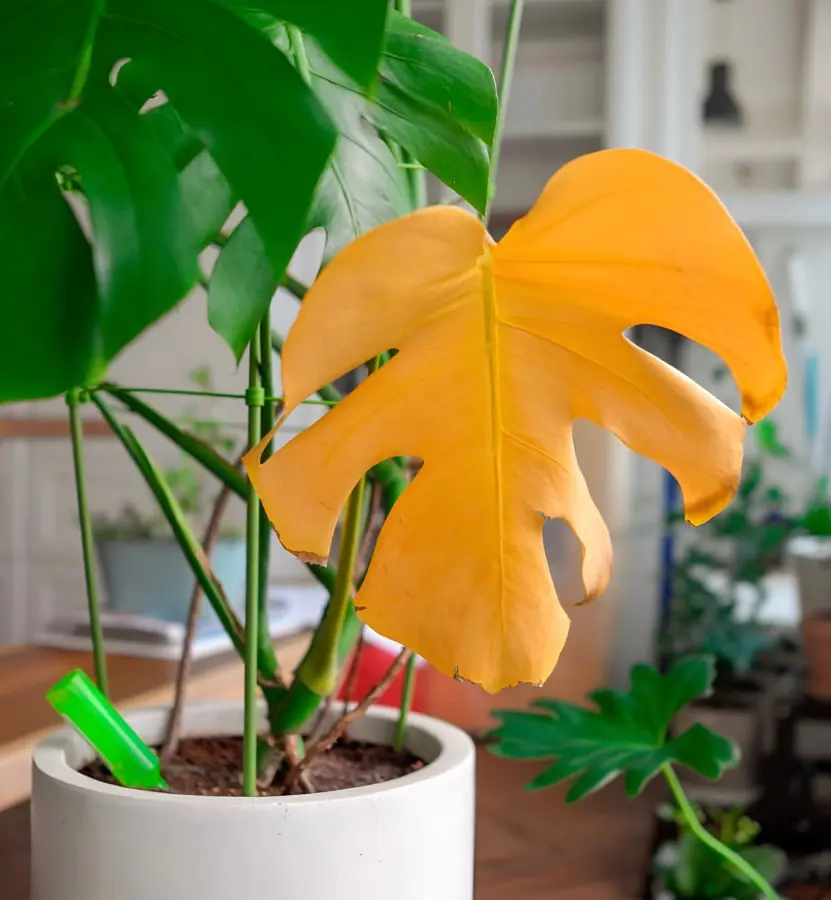
After identifying the potential cause of yellow leaves on your Monstera plant, the next step is to verify the actual cause from the various possibilities. Here's how you can do it:
Elimination Process
Begin by ruling out the causes that are less likely based on your observations and the symptoms exhibited by the plant. For example, if you notice that the soil is consistently damp and the leaves are uniformly yellow, it's more probable that overwatering is the culprit than a nutrient deficiency.
Focus on Specific Symptoms
Pay close attention to the specific symptoms exhibited by the plant. For instance, if the yellowing is accompanied by brown leaf tips, it may indicate underwatering rather than a nutrient deficiency. By honing in on distinct symptoms, you can narrow down the possible causes.
Consider Environmental Factors
Evaluate any recent changes in environmental conditions, such as fluctuations in light exposure, temperature, or humidity. These factors can directly impact the health of your plant and may provide clues to the underlying cause of yellowing leaves.
Consult Reliable Sources
Utilize reputable resources, such as gardening books, online forums, or local plant nurseries, to gather information and insights into common issues affecting Monstera plants. Experienced gardeners and plant enthusiasts may offer valuable advice based on their own experiences.
Seek Professional Assistance
If you're unable to pinpoint the exact cause of yellow leaves or if the symptoms persist despite your efforts, consider seeking guidance from a plant specialist or horticulturist. They can conduct further assessments and provide tailored recommendations to address the specific needs of your Monstera plant.
Here are some other ways to diagnose yellow leaves in your Monstera plant:
- Look at the leaves: Check if the yellowing is all over the leaf or just in some spots. If it's everywhere, it might be due to a lack of nutrients or too much water. If it's in certain spots, pests or damage could be the cause.
- Check watering: Too much water can lead to yellowing, especially near the bottom of the plant, while too little can cause yellow leaves with brown edges.
- Evaluate light: The plant likes indirect sunlight, but direct sunlight can cause burns and yellowing.
- Soil moisture: If the soil's top inch is wet, you might be overwatering; if it's dry, you might be underwatering.
- Test soil pH: Use a soil test kit to check pH levels. Monstera prefers slightly acidic soil, around pH 5.5 to 6.5.
- Review plant history: Note any recent changes in location, repotting, or fertilizing. These changes can affect leaf health.
Treatment Options
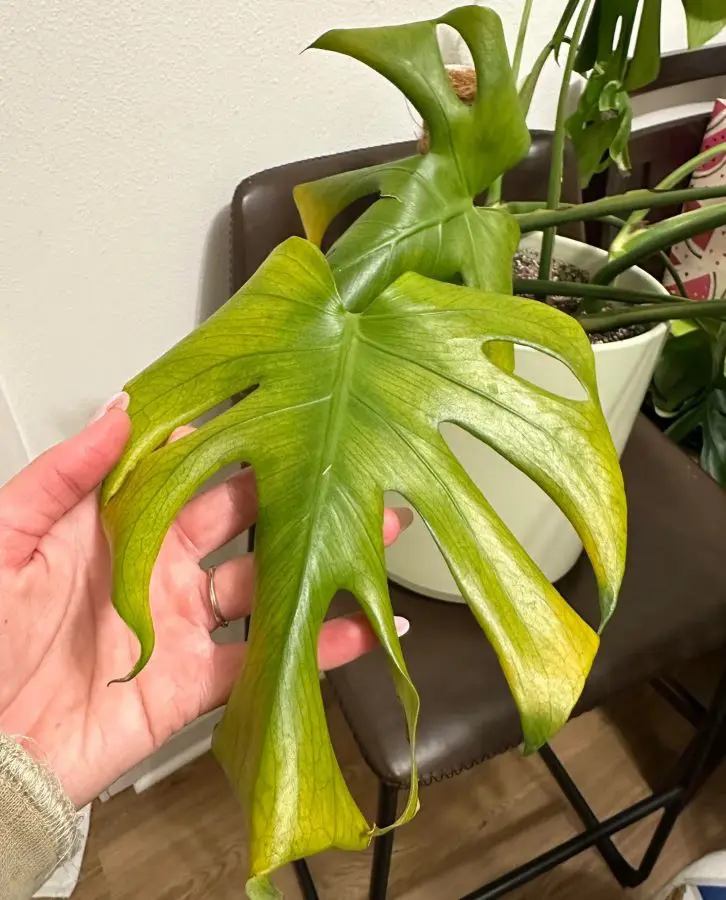
Yellow leaves on Monstera plants can be prevented with proper care and maintenance. It's essential to address the underlying causes promptly to prevent further damage to the plant. Once you've identified the cause of the yellow leaves on your Monstera plant, the next step is to implement appropriate treatment options.
Check the Soil Before Watering
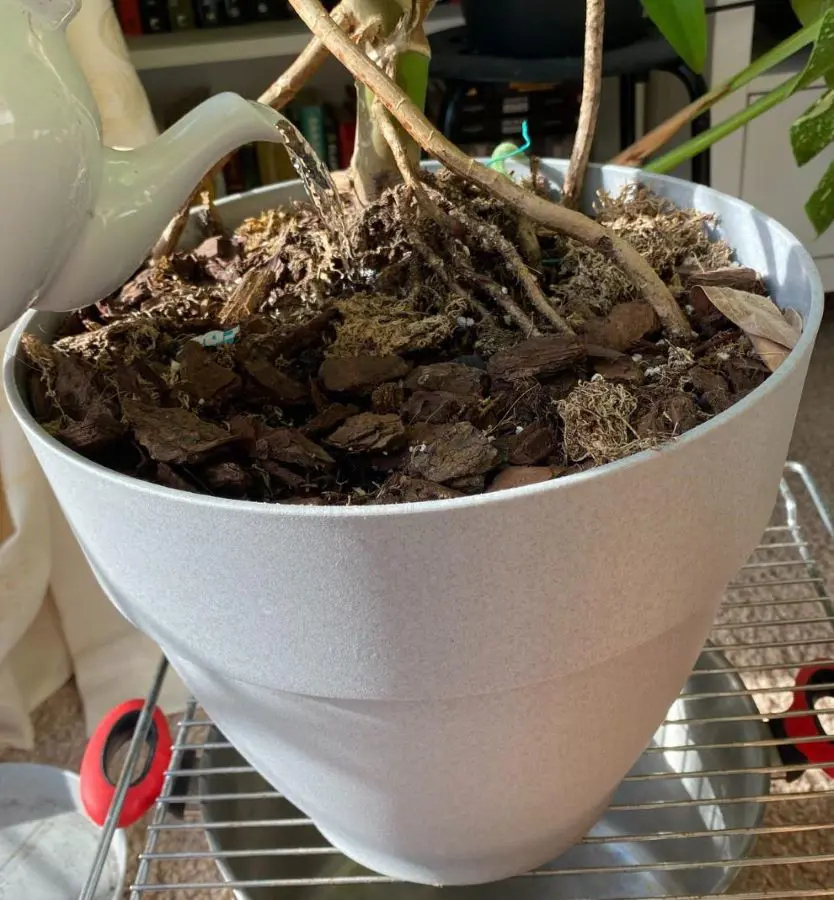
If your Monstera is suffering from overwatering, stop watering immediately. Let the soil dry out entirely before watering again. Check soil moisture by inserting your finger about 2 inches deep; only water if the soil feels dry.
Ensure your pot has drainage holes and uses well-draining soil. Consider repotting if the current soil retains too much moisture. Adjust the watering frequency based on the season and light levels, watering less in winter or low-light conditions.
For underwatering, thoroughly water the plant until water drains from the bottom holes. Let excess water drain completely before returning the pot to its saucer. Increase watering frequency during growth seasons and hot weather, but avoid overwatering by using the finger test. A humidifier can help maintain humidity, reducing the need for frequent watering.
Relocate Monstrea to a Better Lighting Area
If your Monstera isn't getting enough light, try relocating it to a brighter area, preferably with indirect sunlight. East- or north-facing windows work best. Regularly rotate the plant to ensure all leaves get adequate light.
Additionally, you can use grow lights to supplement natural light, particularly during darker months or in dimly lit rooms. If your plant is receiving too much direct sunlight, move it away from direct rays or use sheer curtains to filter the light. Trim any leaves with noticeable sun damage to promote healthy growth.
Opt for A Balanced Fertilizer
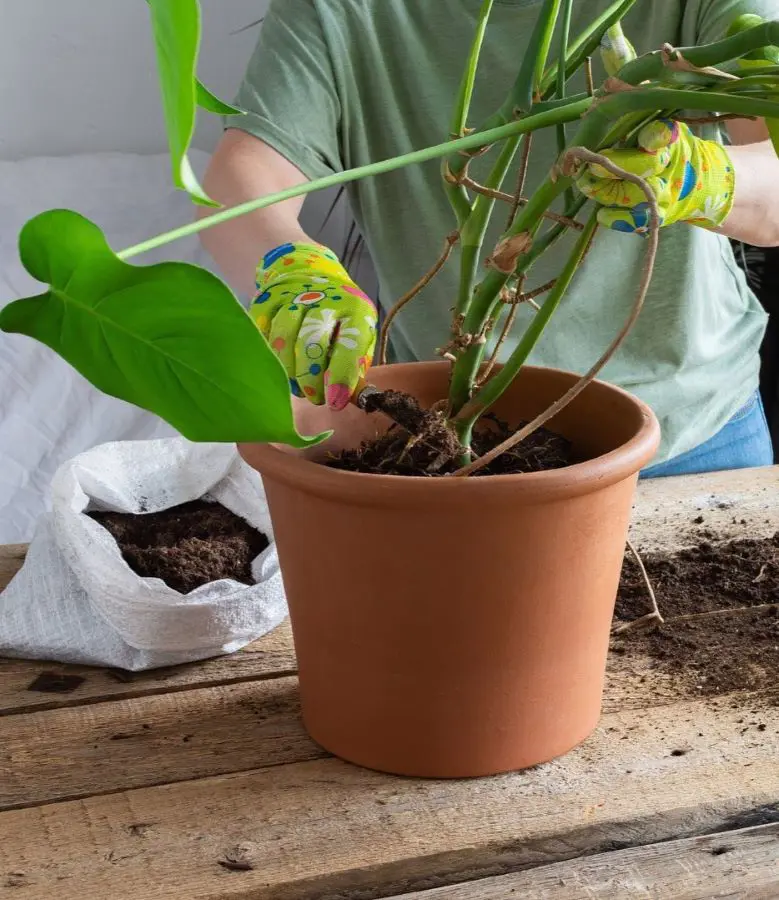
Fertilize your Monstera regularly during the growing season with a balanced fertilizer. Monitor the plant's growth and adjust the fertilization frequency as needed.
For a nitrogen deficiency, quickly apply a balanced fertilizer as directed on the package. Diluted fertilizer applied directly to the leaves can also help in the short term. In the long run, regularly fertilize with a balanced fertilizer suitable for Monstera during its growing season.
If there's a magnesium deficiency, promptly treat the soil with an Epsom salts solution (1 teaspoon per gallon of water) or apply a diluted Epsom salts spray to the leaves. In the long term, use a fertilizer containing magnesium or periodically supplement it with Epsom salts.
Be Aware of the Potential Causes
For temperature issues, immediately adjust the surroundings to the ideal range of 65–80 °F. If needed, use a humidifier or relocate the plant. In the long term, keep an eye on temperature changes and use devices like thermostats or humidifiers for stable conditions.
To address humidity problems, quickly boost humidity with a humidifier, pebble tray, or by grouping plants. Misting can help but shouldn't be relied upon solely. Long-term, aim for consistent humidity levels (50–60%) using appropriate methods.
General Care Tips
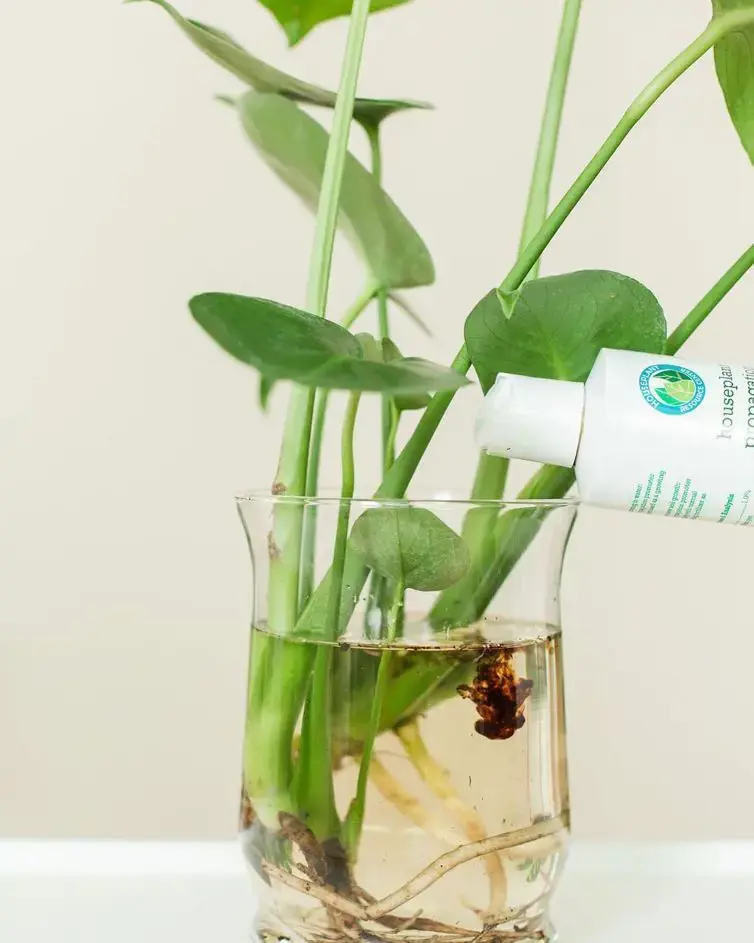
Caring for Monstera plants is generally considered to be relatively easy, especially in indoor environments. They are considered hardy plants and can tolerate a range of conditions, making them suitable for beginners and experienced plant enthusiasts alike.
However, while they are resilient, they do have specific care requirements to ensure optimal growth and health.
Watering
Watering your Monstera is like performing a gentle ritual, much like a calming tea ceremony. Just as you wait for the tea to cool before sipping again, allow the top inch or two of soil to dry out before giving your plant a drink.
However, be cautious as overwatering can be harmful, causing root rot and ultimately harming your plant. When you do water, ensure that you water thoroughly until excess water drains from the bottom of the pot, and then empty the saucer to prevent water from pooling.
Fertilization
Feed Monstera plants with a balanced, water-soluble fertilizer every 4–6 weeks during the growing season (spring and summer). Dilute the fertilizer to half-strength to prevent over-fertilization, which can lead to salt buildup in the soil.
During spring and summer, give your Monstera a monthly fertilizer boost, like a vitamin shot for growth. In the winter months, let your Monstera rest and skip the fertilizer, allowing it to recharge for the next growing season.
Light Exposure
Place Monstera plants in bright, indirect sunlight. They are considered a great indoor plant for low-light conditions due to their adaptability. Too little light (think dim corners) leads to leggy growth and fewer fenestrations (those alluring leaf holes).
Rotate the plant periodically to ensure even light exposure and balanced growth. If you don't have a lot of natural light, you can supplement with a grow light.
When To Seek Help
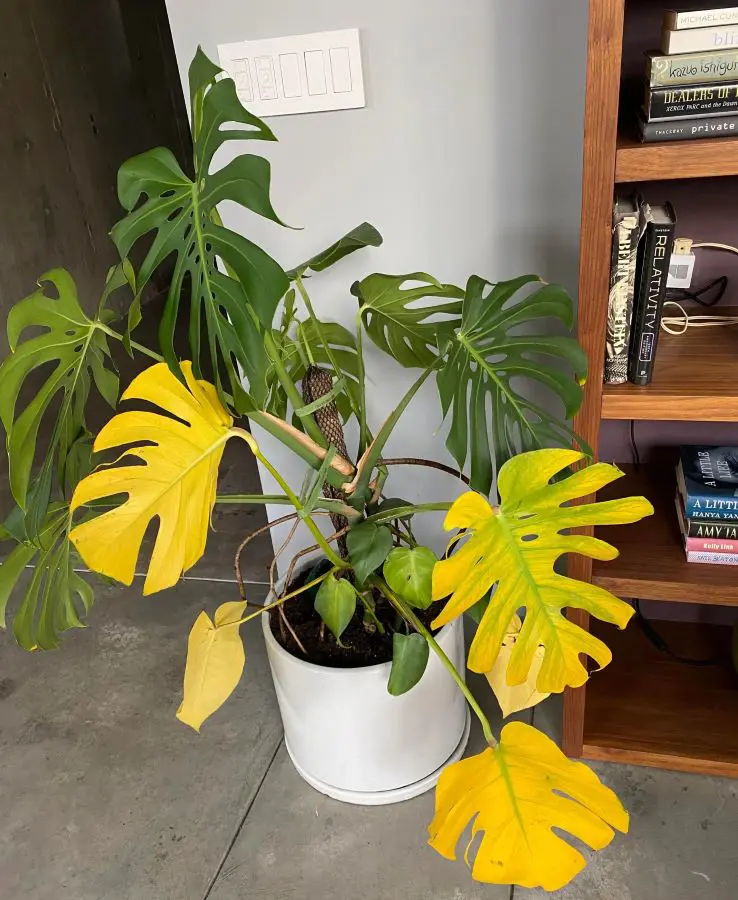
If you've tried fixing common problems like too much water, not enough light, or lacking nutrients, and your low-light indoor plant's leaves are still turning yellow, it might be a good idea to ask plant experts for help.
They have special knowledge and can give you advice on how to figure out what's wrong and how to fix it. Getting help from plant experts ensures that your Monstera gets the right care it needs to stay healthy. It's especially helpful if you've already tried regular fixes but they haven't worked.
Here are some situations where seeking professional help may be necessary:
- Pest infestations: When you see signs of pests like webs, holes, or sticky residue, it's essential to get help from plant experts. They can identify the pests and suggest treatments to get rid of them.
- Diseases: Yellowing leaves could indicate plant diseases like fungal infections or bacterial wilt. If you suspect a disease, professionals can diagnose it and recommend treatments to prevent its spread.
- Nutrient deficiencies: If you've ruled out other reasons for yellowing leaves and suspect a lack of nutrients, seek professional help. Experts can identify the deficiency and advise on fertilizers or soil amendments.
- Advanced plant care: For new plant owners or those unsure about caring for Monstera plants, professional guidance can be invaluable. Experts can offer advice on watering, lighting, and fertilization to maintain healthy growth and prevent yellowing leaves.
In summary, consulting plant experts when faced with yellowing leaves on your Monstera plant can help diagnose the issue and recommend treatments to restore its health.
Recent posts
Plant Care
Plant Care
How To Take Care Of An Orchid Plant? 11 Tips And Tricks
If you love gorgeous orchids but are worried they're too high-maintenance, don't worry. This guide is like a cheat sheet for orchid newbies. Forget fancy words and confusing schedules — we're talking about how to take care of an orchid pla...
Plant Care
How To Grow and Care For Peace Lily Plant
The Peace Lily is an indoor plant that is most valued for its beautiful and shiny green leaves as well as the white blooms. Hard and tolerant, it’s naturally a low-maintenance addition to your plant collection. If you are confused, let us tell ...
Plant Care
Pothos Plant Care And Growing Guide
Adding a Pothos plant (Devil’s Ivy) to your home benefits the environment and aesthetic of your personal space. It's easy to maintain and is loved for it's ability to enhance indoor air quality by removing toxins like formaldehyde, benzene, and...
Plant Care
Snake Plant Care and Growing Guide
Snake plants require low maintenance, and low light and are almost impossible to kill, making them a perfect plant for beginners and seasoned gardeners. In this guide, we will explore essential care tips and optimal growing conditions for snake plant...
Plant Care
How To Plant, Grow and Care Majesty Palm
The majestic palm, scientifically known as Ravenea rivularis, makes for a stunning indoor tree with its lush and grand fronds. Originating from Madagascar's river banks, this resilient houseplant is cherished not only for its beauty but also for its ...
Plant Care
How To Grow And Care For A Hosta Plant
Hosta plants are widespread perennials, often grown for their beautiful and diverse foliage. They are extremely easy to care for and can thrive in various conditions, particularly shade or semi-shade. These hardy plants can last for many years and re...

